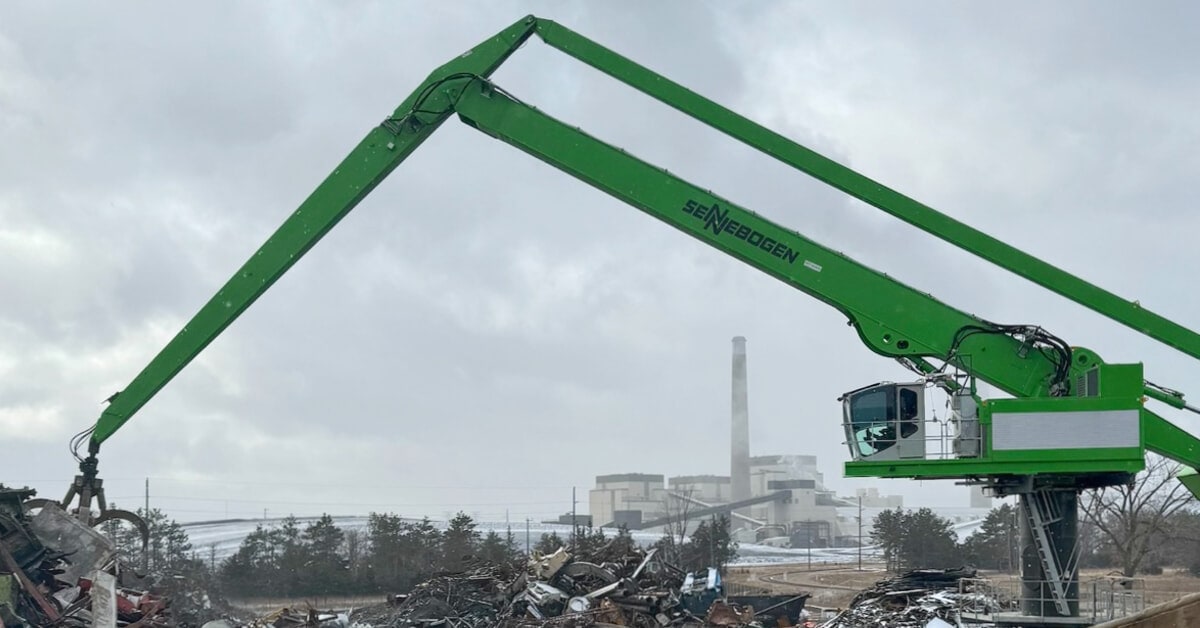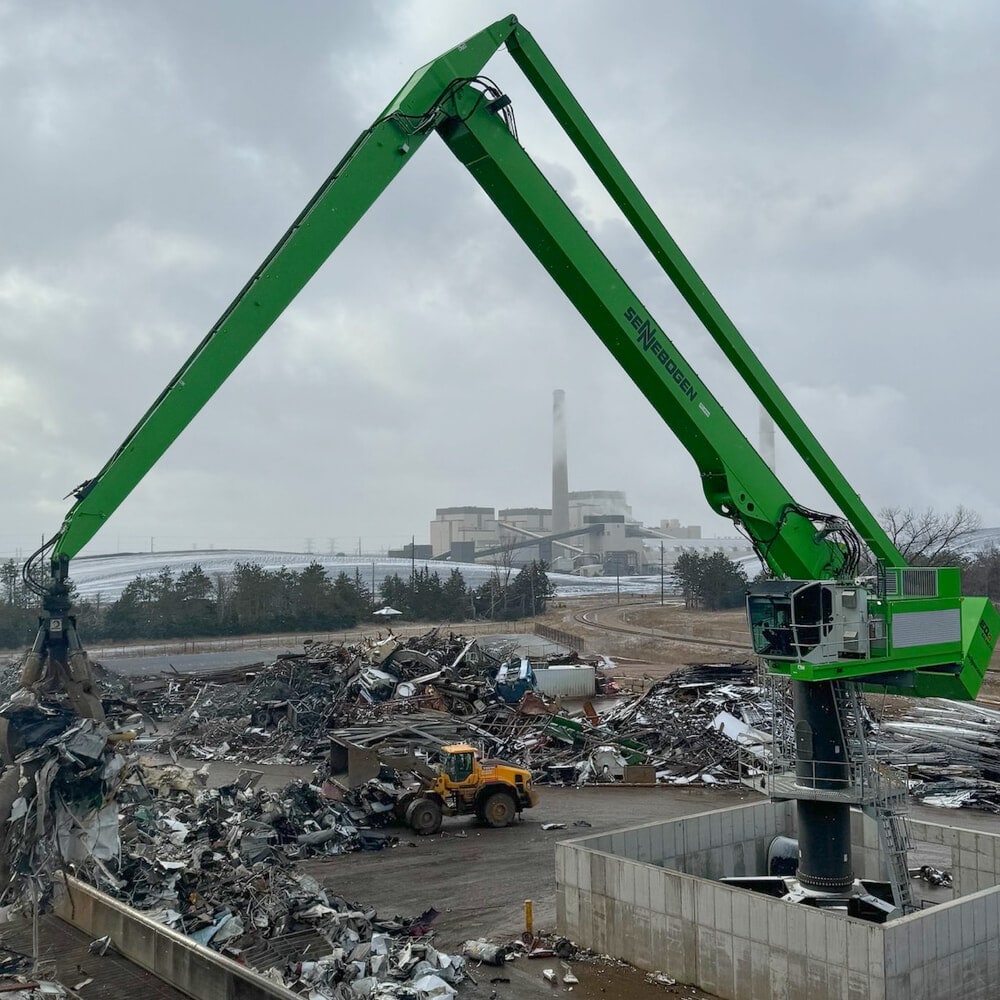CHOOSE
A DIFFERENT TERRITORY

EMR's Becker facility continues raising the bar by further lowering onsite emissions with investment into electric crane.
As EMR – a global leader in sustainable materials - works towards its ambitious 2040 net-zero target, teams across its US, UK and EU operations are working hard to transform the way the company does business, leaving a positive impact on the planet by protecting the environment and reducing emissions – all while maintaining its industry-leading service.
One of the most effective ways of decarbonising a complex business, such as EMR, is to invest in the latest technology. At the company’s state-of-the-art facility in Becker, Minnesota, this is exactly what is happening. Joining the vast array of innovative technologies that already makes Becker the most advanced shredding facility is the Sennebogen 895e electronic crane, which was commissioned in November 2023 and has already made an impact.

“By continually and objectively evaluating how we work, we find ways to reduce our environmental impact. It’s about looking at our business through the lens of sustainability. If we want to make really substantial improvements to our facility’s sustainability, technology can play an important role,” says Jake Hansen, Site Manager at EMR Becker.
“In fact, early estimates suggest our team is saving over 250 gallons of diesel per month thanks to switching to the electric crane,” Jake adds.
The pioneering Becker facility is located in a US state famous for its waterways, rural economy, and the diversity of its natural landscapes, making it essential that EMR does all it can to safeguard the local environment. It is one of the reasons Hansen and his team have worked so hard to develop a shredder facility that runs on 100 percent renewable energy, and which produces zero emissions to air and water.
To achieve this, the entire facility has been built to be fully enclosed, further reducing the risk of pollutants running off material, during rainfall, into the soil and contaminating the water table. Being fully enclosed also means it can operate at negative air pressure, treating the polluted air and stopping it from leaving.
“For people driving past, it may be hard to image that there is such a complex and powerful network of cutting-edge machinery operating inside the warehouse building,” Jake says. “And for our team – most of whom live within a few miles of the site – it is obviously important that their employer is doing all it can to protect their community and the area’s natural beauty.”
EMR has also invested $2.5 million in a new rail line, to ensure that the recycled metals that the site produces can be transported sustainably throughout continental USA.
“The arrival of the new Sennebogen crane is just the next piece of the puzzle – reducing the carbon emissions and exhaust fumes created while recycling material using diesel. We are continuously exploring ways to reduce our carbon footprint and investing in new technologies that allow us to accomplish our sustainability goals.
As EMR sites across the country strive to continue to create a positive environmental impact, EMR Becker is providing a great example of how to do it. That’s something that my team is, rightly very proud of.”